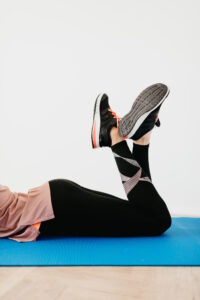
Pilates is a highly effective exercise method that offers numerous benefits for both the body and mind. However, as a beginner, it’s important to be aware of common mistakes that can hinder progress and potentially lead to injury. By understanding and avoiding these mistakes, beginners can ensure a safe and effective Pilates practice. In this comprehensive guide, we will explore common mistakes to avoid in Pilates for beginners, providing insights and tips to help you establish a strong foundation for your Pilates journey.
What I wish I knew before starting Pilates?
Before starting Pilates, there are a few key things that are helpful to know. These insights can set the stage for a more enjoyable and successful Pilates experience:
1. Quality over Quantity: In Pilates, it’s important to prioritize quality of movement over the number of repetitions. Focus on performing each exercise with proper form, control, and precision. This will yield better results and minimize the risk of injury.
2. Mind-Body Connection: Pilates is not just about physical strength; it’s about cultivating a mind-body connection. Pay attention to your breath, engage your core, and focus on the sensations in your body during each exercise. This mindfulness enhances the effectiveness of your Pilates practice.
3. Progression Takes Time: Progress in Pilates is gradual and cumulative. Don’t expect immediate results or try to rush through the exercises. Take the time to build a solid foundation, master the basics, and gradually advance as your strength and flexibility improve.
4. Seek Professional Guidance: Consider taking classes or working with a certified Pilates instructor, especially as a beginner. They can provide guidance, corrections, and modifications tailored to your individual needs, ensuring proper technique and minimizing the risk of mistakes.
How do you know if you’re doing Pilates correctly?
Proper form and alignment are crucial in Pilates to ensure maximum benefit and prevent injuries. Here are some signs that indicate you’re doing Pilates correctly:
1. Core Engagement: Pilates exercises place a strong emphasis on core engagement. If you feel your deep abdominal muscles, such as the transversus abdominis, working and supporting your movements, it’s a good sign that you’re engaging your core correctly.
2. Balanced Muscle Engagement: Pilates aims for balanced muscle development throughout the body. If you feel equal effort and engagement in both sides of your body during exercises, it suggests proper muscle activation and alignment.
3. Control and Precision: Pilates is characterized by controlled, precise movements. If you’re able to move smoothly and with control, avoiding jerky or rushed movements, you’re likely performing the exercises correctly.
4. Body Awareness: Pilates encourages body awareness and mindfulness. If you’re able to focus on the sensations in your body, maintain proper alignment, and make necessary adjustments, it indicates that you’re practicing Pilates with attentiveness and awareness.
Is Pilates too hard for beginners?
Pilates can be challenging, but it is suitable for beginners. However, it’s important to approach it with patience, awareness, and proper guidance. Pilates may feel difficult initially due to the emphasis on core engagement, controlled movements, and mind-body connection. As a beginner, it’s essential to start with foundational exercises, focus on proper form, and gradually progress at your own pace. Seek the guidance of a qualified instructor who can provide modifications and help you develop a solid understanding of the Pilates technique.
How do I prepare for Pilates for the first time?
Preparing for your first Pilates session can contribute to a positive and successful experience. Consider the following tips:
1. Wear Comfortable Clothing: Choose comfortable, form-fitting clothing that allows for a full range of movement. Avoid clothing with zippers, buttons, or anything that may cause discomfort while lying or stretching on the mat.
2. Hydrate and Fuel: Stay hydrated before your session and have a light snack if needed. Pilates can be physically demanding, and proper hydration and nutrition contribute to optimal performance.
3. Communicate with Your Instructor: Inform your instructor about any injuries, physical limitations, or concerns you may have. This allows them to provide modifications or alternative exercises tailored to your needs.
4. Arrive Early: Arrive a few minutes early to familiarize yourself with the studio or environment, meet your instructor, and get set up with any necessary equipment.
In this comprehensive guide to common mistakes to avoid in Pilates for beginners, we discussed key insights that are helpful to know before starting Pilates, including prioritizing quality over quantity, developing a mind-body connection, understanding the gradual progression, and seeking professional guidance. We explored signs that indicate you’re doing Pilates correctly, such as core engagement, balanced muscle activation, control, precision, and body awareness. While Pilates can be challenging, it is not too hard for beginners. With proper guidance and a mindful approach, beginners can safely and effectively practice Pilates. Lastly, we provided tips on how to prepare for your first Pilates session, emphasizing the importance of wearing comfortable clothing, hydrating, communicating with your instructor, and arriving early. By following these insights and avoiding common mistakes, beginners can lay a strong foundation for their Pilates practice and experience the transformative benefits it offers for both the mind and body.